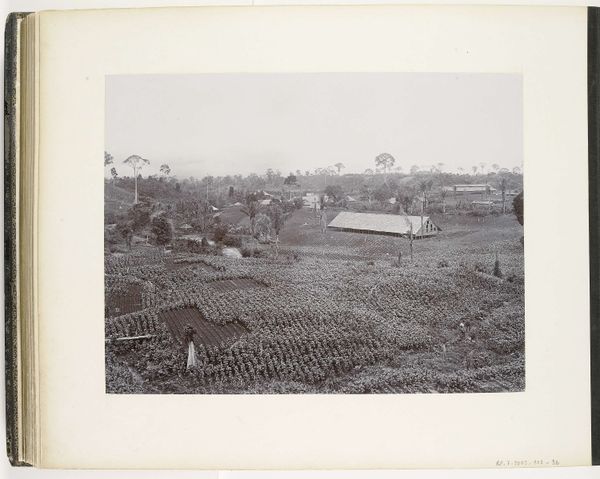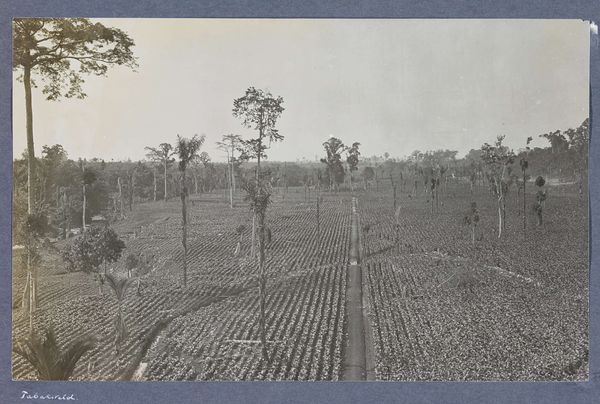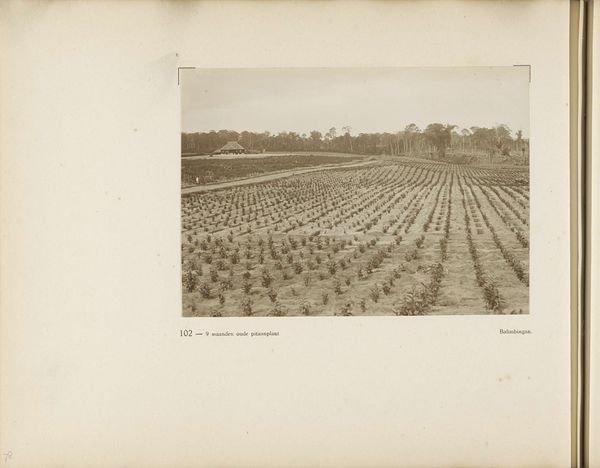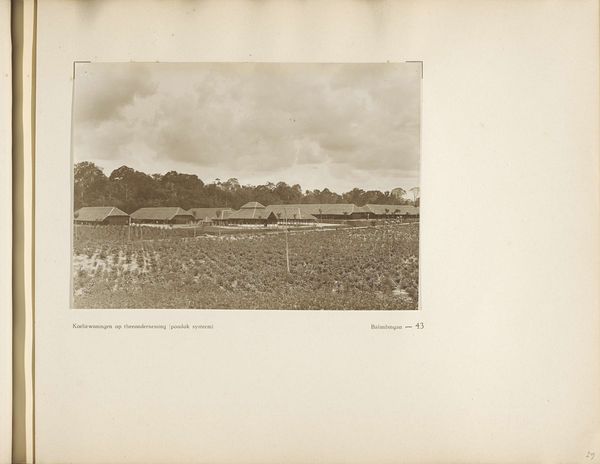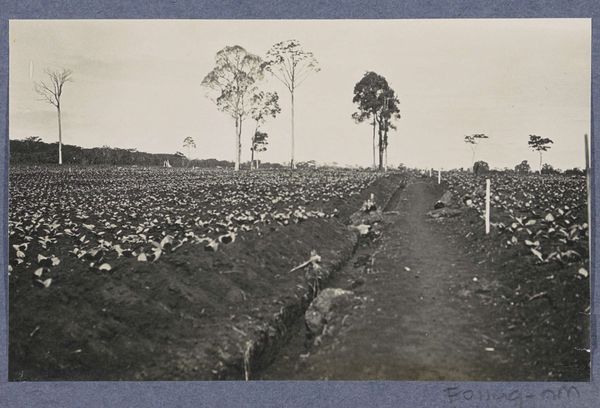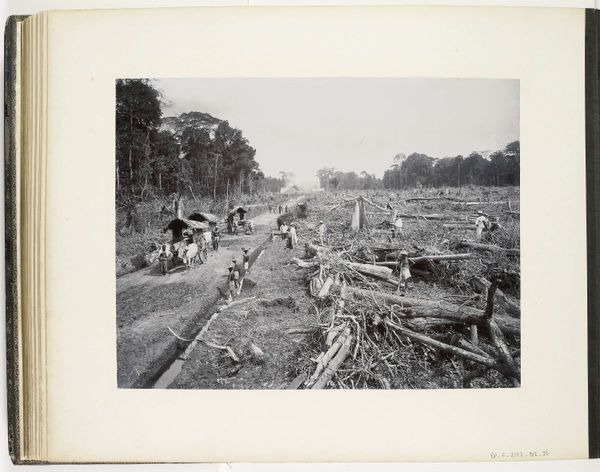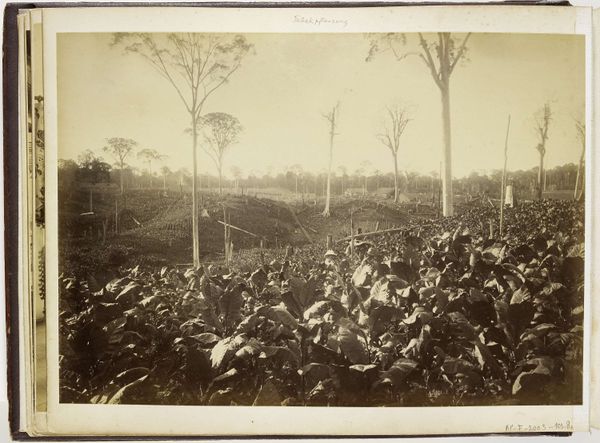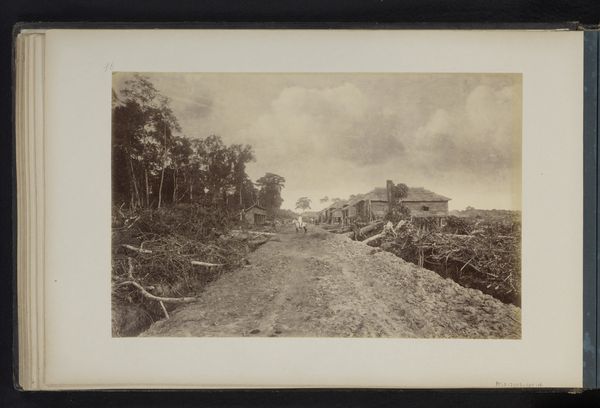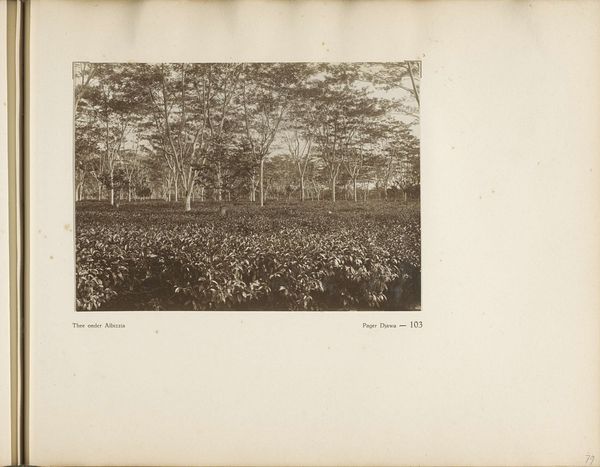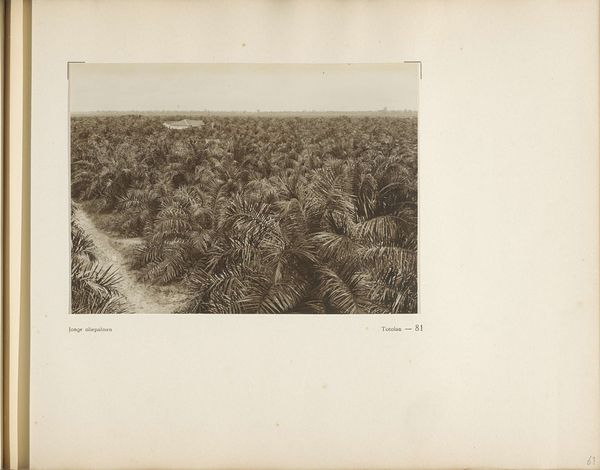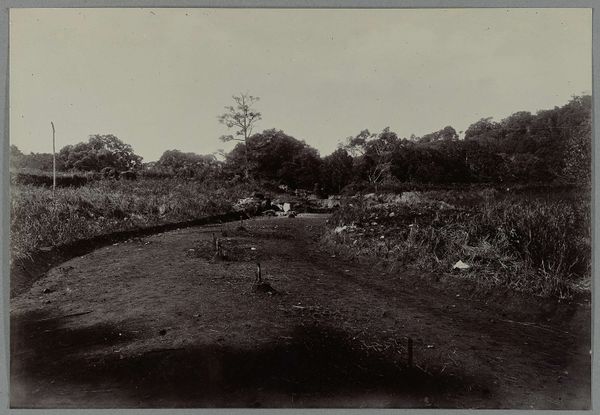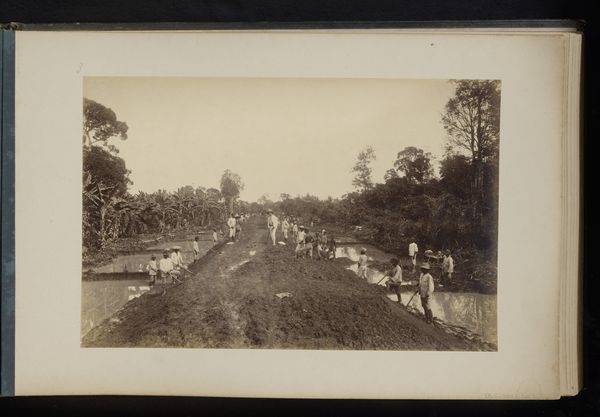
Gezicht op de zaaivelden met rijtjes tabaksplanten van een plantage bij Kalahoen Penang, Sumatra (Junger Tabak, Kal. Penang) c. 1895 - 1900
0:00
0:00
carljkleingrothe
Rijksmuseum
photography, gelatin-silver-print
#
landscape
#
photography
#
coloured pencil
#
orientalism
#
gelatin-silver-print
#
realism
Dimensions: height 271 mm, width 359 mm
Copyright: Rijks Museum: Open Domain
Editor: This gelatin silver print, "Gezicht op de zaaivelden met rijtjes tabaksplanten van een plantage bij Kalahoen Penang, Sumatra," taken sometime between 1895 and 1900 by Carl J. Kleingrothe, depicts rows of tobacco plants on a Sumatran plantation. There's a strange formality in how the natural landscape is regimented; what visual narratives do you find particularly compelling in this photograph? Curator: The repetitive nature, yes, that order imposed on the land speaks volumes. It isn’t just a landscape, but a symbol of colonial ambition and resource extraction. The perfectly aligned rows, almost like lines on a page, read as a deliberate visual language asserting dominance. Do you see how the light emphasizes this control? Editor: Absolutely, the almost clinical starkness makes me think about industrial processes even though it's ostensibly an outdoor scene. The photograph seems less about celebrating nature and more about its manipulation. Is that intentional, or a product of the photographic style of the time? Curator: The choice of photography itself is a signifier. In that era, it offered an 'objective' lens – purportedly showing the world as it 'really' was. But 'objectivity' can itself become a potent tool. The rigid composition mirrors the rigid social and economic structures of colonial plantations, a visual echo of power relations. Consider how the very act of documenting this landscape cements a specific narrative of progress and ownership. The land transformed from nature to capital. What echoes of other colonial imagery do you detect here? Editor: That's insightful; it’s less a window onto Sumatra, and more of a mirror reflecting the values of its colonizers. It's unsettling how a seemingly simple landscape can embody so much historical and cultural weight. It shifts my perspective on how I usually look at landscape art. Curator: Exactly. Visual symbols, when deciphered, can unravel complex histories and expose the intricate ways in which power and culture intertwine, transforming a seemingly innocuous image into a profound statement. The land speaks; we simply need to understand its language.
Comments
No comments
Be the first to comment and join the conversation on the ultimate creative platform.
